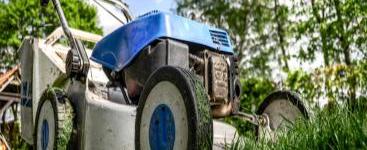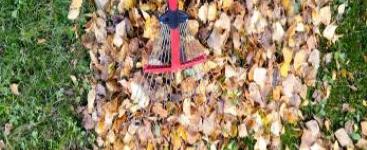
The Best Lawn Care Tips For Spring
As spring approaches, you'll want to get the most out of your lawn. From aerating and seeding to weed control, there are several spring lawn care tips that can make your yard greener.
Aerating the soil before winter helps to promote a healthy root system for your grass to perk up in the spring. It also allows for more air, water, and nutrients to reach the roots of your grass.
1. Mow Often
One of the best spring lawn care tips is to mow more often than you normally do. This is especially important for preventing disease, which can occur if you don’t mow enough of your grass in the spring.
It’s easy to think of mowing as an everyday chore, but it can have a significant impact on the health of your grass. By mowing more frequently, you’ll help keep your grass healthy and strong all season long.
When it comes to mowing, you’ll want to ensure that you cut your lawn correctly so that you don’t damage the grass blades or cause any problems with your mower. In addition, you should never cut off more than a third of the blade at once.
This is also important for ensuring that your lawn is kept at the proper height, which will keep it from yellowing and stress-related diseases. Keeping your lawn at the right height will also prevent your mower from clogging up with leaves, sticks or other debris that can be a real pain to clean up.
If you have a lawn that tends to be too tall or too thin, it can take a lot of work and money to restore the look and strength of your yard. Getting your grass at the right height in the spring is the key to improving the health and longevity of your lawn.
Once you’ve got your lawn at the correct height, it’s time to begin mowing. Ideally, you should mow your lawn every five days for the first six weeks of the spring, depending on your weather conditions.
The reason that it’s so important to mow more often in the spring is because it can help to keep your lawn healthy and green all season long. It will also help to deter weed growth and keep your grass from becoming too tall or too thin.
Another great spring lawn care tip is to re-shape the edges of your lawn. This is a simple and quick process that will make your grass look much neater and cleaner. All you need is an edging iron tool or a pair of lawn shears.
2. Remove Dead Grass
During the spring, your lawn is in a period of active growth. This is why it’s important to take care of it in the early part of the year, as you can help promote a quick recovery from winter stress and grueling conditions.
When the soil has become compacted due to a heavy layer of dead grass, it’s hard for air and water to get to the roots of your lawn. That’s why you need to aerate your yard, which loosens the soil and allows nutrients and water to penetrate deeper into the ground.
Aerating your lawn with a plug or spike aerator can help keep it healthy and thriving. You can also plant new grass seed in any thin or yellowing areas to improve your lawn’s health.
If your lawn has patches of brown or pale grass, it likely needs to be resodded. Resodding is a process where you mix up a fresh supply of grass seed and then spread it over the bare spots on your lawn.
Typically, you want to mix a variety of grasses that grow well in your area. For most Iowa lawns, this includes a blend of Kentucky bluegrass and perennial ryegrass. You can also try a shade mix, which may include fine fescue.
After reseeding, it’s a good idea to dethatch your lawn to remove the dead grass blades. Then, you can overseed the bare spots with new grass seed to improve the overall health of your lawn and promote faster growth.
Removing dead grass in the spring is a great way to help your lawn get off to a healthy start. It’s a natural part of spring lawn maintenance, and it helps the soil retain moisture and prevent disease from spreading to the rest of the turf.
You can do this by raking the dead grass to loosen up the soil and removing the slack from the root system. You can rake the lawn in both directions, which will allow you to remove all of the dead grass from both sides.
This is one of the best spring lawn care tips, as it’s an easy way to improve your soil and give it a fresh start. It’s a simple and easy task that you can do yourself, but it’s crucial to do it right to ensure your lawn stays healthy and vibrant throughout the year.
3. Fertilize
After a long winter, your lawn needs to be given a burst of nutrients to thrive. This can be achieved by fertilizing in the spring, which will give your grass a much-needed boost of energy and keep it healthy all summer.
It is also important to remember that you should always fertilize your grass when the temperature is above 55 degrees Fahrenheit. The ground is at its optimum temperature for a healthy, green lawn so it is the best time to give it the boost of nutrients needed.
Fertilizing in the spring will also help your grass grow strong and dense, which makes it less susceptible to weed invasion. However, it is important to use the right type of fertilizer for your specific grass type and to follow the instructions on the bag.
The most effective way to know if your grass is ready for fertilizer is to look at it through the soil. If the grass is still dormant, it is best to wait until it reaches the proper growing season (this can vary depending on where you live and the type of grass that you have).
In most parts of the country, it is a good idea to check the soil temperature using a soil thermometer or by watching lilacs blossom, as this will serve as an indicator that the soil is at its optimal temperature. Once the soil reaches 55o F, you can then fertilize your lawn in the early spring.
If your grass is in good health and looking green, you can fertilize it again four weeks later, right around mid-May. It is then recommended to fertilize it every six or eight weeks throughout the active growing season, which lasts until October.
When you are ready to fertilize your lawn in the spring, it is best to choose a balanced, slow-release lawn fertilizer that contains equal amounts of nitrogen, phosphorus and potassium. These three nutrients are the building blocks of a healthy lawn and are essential to its growth.
It is also important to ensure that your lawn receives a thorough watering after applying fertilizer to avoid burning the grass. If you are under water restrictions due to drought, it is important to wait until it rains again before you apply a fertilizer. It is also a good idea to spread fertilizer onto the ground before it begins to dry out, which will allow it to soak into the soil.
4. Weed Control
Using weed control is a crucial part of spring lawn care. Often, it is the only way to keep a weed-free lawn throughout the entire year, so it is important to make sure that weeds are removed early on before they grow and cause problems.
Weeds are not only unsightly and unattractive, but they also compete with healthy grass for nutrients and water. This can lead to poor growth and a lack of greenery.
Dandelions, clovers and crabgrass are a few of the most common spring weeds. The good news is that most spring weeds can be prevented from growing by applying a pre-emergent herbicide.
These herbicides prevent weed seeds from germinating and they are effective against weeds such as poa annua, dallisgrass and crabgrass. You can also use a pre-emergent weed treatment on bare areas of your lawn to prevent weeds from growing in those spaces.
When a lawn is properly cared for, it will grow thick and healthy grass that will crowd out weeds. Keeping a lawn free of weeds is critical to creating the type of lush, green landscape that you desire.
A weed-free lawn is easier to maintain and can save you money in the long run. You can eliminate weeds by hand-pulling them or using a chemical weed killer.
The best time to use a weed-control chemical is in the spring because it is before weeds start to sprout. This will help you prevent weeds from starting to grow in the first place, which will make your job of removing them much easier later on.
Another reason to get a head start on weed control is because weeds are more susceptible to being killed by chemicals during the spring. This is because soil temperatures can be higher during the spring than they are during the summer. This will affect how well a weed-control chemical works.
If you want to avoid weeds all together, it is best to choose an organic treatment that is not harmful to the environment. There are a few options, such as organic herbicides and beneficial nematodes.

Lawn Mowing
We service both Commercial and Residentual clients

Lawn Care
We offer weed whipping, edging, hedging, pruning & mulching services.

Spring & Fall Cleanup
Need your yard and property cleaned-up for the spring or fall? Call us today!

Snow & Ice Removal
Snow and Ice removal services can be customized to fit your level of need.